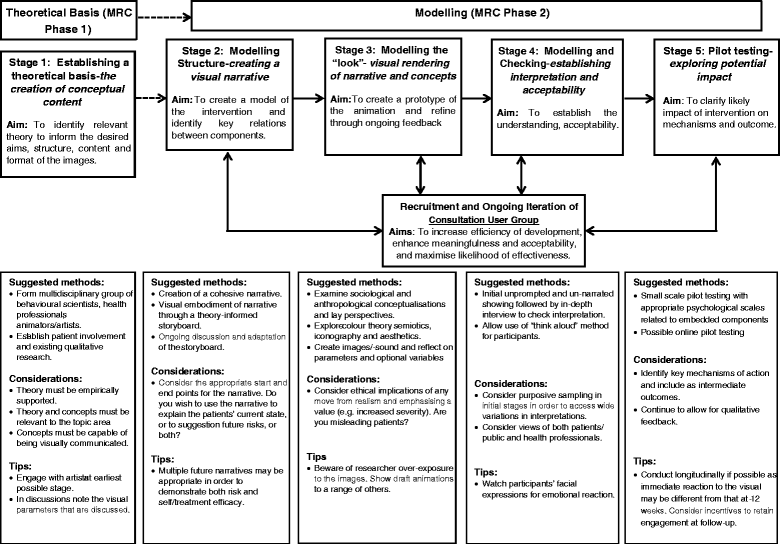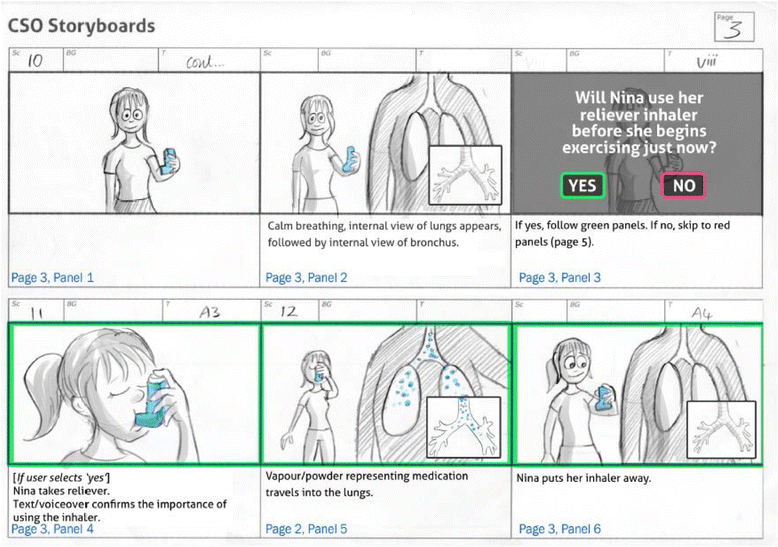A theory-informed approach to developing visually mediated interventions to change behaviour using an asthma and physical activity intervention exemplar
- PMID: 27965863
- PMCID: PMC5154090
- DOI: 10.1186/s40814-016-0091-x
A theory-informed approach to developing visually mediated interventions to change behaviour using an asthma and physical activity intervention exemplar
Abstract
Background: Visualisation techniques are used in a range of healthcare interventions. However, these frequently lack a coherent rationale or clear theoretical basis. This lack of definition and explicit targeting of the underlying mechanisms may impede the success of and evaluation of the intervention. We describe the theoretical development, deployment, and pilot evaluation, of a complex visually mediated behavioural intervention. The exemplar intervention focused on increasing physical activity among young people with asthma. We employed an explicit five-stage development model, which was actively supported by a consultative user group. The developmental stages involved establishing the theoretical basis, establishing a narrative structure, visual rendering, checking interpretation, and pilot testing. We conducted in-depth interviews and focus groups during early development and checking, followed by an online experiment for pilot testing. A total of 91 individuals, including young people with asthma, parents, teachers, and health professionals, were involved in development and testing.
Results: Our final intervention consisted of two components: (1) an interactive 3D computer animation to create intentions and (2) an action plan and volitional help sheet to promote the translation of intentions to behaviour. Theory was mediated throughout by visual and audio forms. The intervention was regarded as highly acceptable, engaging, and meaningful by all stakeholders. The perceived impact on asthma understanding and intentions was reported positively, with most individuals saying that the 3D computer animation had either clarified a range of issues or made them more real. Our five-stage model underpinned by extensive consultation worked well and is presented as a framework to support explicit decision-making for others developing theory informed visually mediated interventions.
Conclusions: We have demonstrated the ability to develop theory-based visually mediated behavioural interventions. However, attention needs to be paid to the potential ambiguity associated with images and thus the concept of visual literacy among patients. Our revised model may be helpful as a guide to aid development, acceptability, and ultimately effectiveness.
Keywords: 3D animation; 3D computer animation; Asthma; Interdisciplinary; Intervention development; Mixed-methods; Visual.
Figures
References
-
- Craig P, Dieppe P, MacIntyre S, Michie S, Nazareth I, Petticrew M. Developing and evaluating complex interventions: new guidance. Med Res Counc. 2008. http://www.mrc.ac.uk/Utilities/Documentrecord/index.htm?d=MRC004871 Accessed Dec 2011.
Grants and funding
LinkOut - more resources
Full Text Sources
Other Literature Sources





